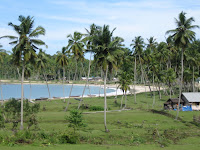What a treat this morning … I checked email and found two short emails from the Indonesia Red Cross (PMI) IT/Telecom technician in Banda Aceh, Pak Adi who was my right-hand man. He’s the glue that will hold the radio network together. The first email only contained two words but was a thousand words strong for me. It simply asked “How aryou?” The second email duplicated the first but in Bahasa Indonesia. Pak Adi has minimal English and 99% of our communication was through Salman, our interpreter. Still, somehow, we had a bond that I thought was more me than him. Of all the people I worked with in Aceh he was not one I would have expected to hear from. So you can imagine my delight to see his question. Today is going to be a good day!!
As I reflect on my three months in Indonesia (I’ve been home for two weeks now) it’s almost always the people I worked with that come to mind:
- PMI technicians: Pak Adi, Sayed,
- IFRC technicians: Pak Edho, Andrea, Alex, Helmi,
- Interpreters: Salman, Jumari,
- IFRC HQ staff: Bu Dian, Tina, Ari, et al
- Drivers: Dharnisal, Muslim, Mursalin, et al
- IFRC delegates in Aceh: Susil, Shesh, Odette, Andy, et al
- American Red Cross delegates in Aceh: Ken, Dr. Ayham, et al
- My partner for the first month: Glen
- And, last but certainly not least: Sarmad
My view of Muslim people, primarily formed by the western media, has been forever changed. Everyone I met was friendly. I wonder if “radical Islam” is present in Aceh. If it is, I sure didn’t see it. Then it could be the ‘rose-colored glasses’ I usually wear!
The next thing I remember is the wonderful food – everywhere I went we ate very well. I love spicy food so I was in heaven.
And of course, the scenery – what a magnificent country from the coastal beaches to the high altitude mountain vistas.
I miss Indonesia already, especially Aceh where I spent the bulk of my time, and hope to get back there sometime.
Emails, like the one I received this morning, bring it all back. Thank you Pak Adi.
It goes without saying that life goes on. I mowed the lawn for the first time this year; I’ve scheduled some work to be done on our boat; the motorcycle is in the shop having all of it’s bodily fluids refreshed; and the long list of projects around the house looms!! Before I get started on the list however Ann and I are making a trip out east to Virginia and DC to first visit with some friends and then to call into the Red Cross HQ and complete my debrief from the Indonesia mission.
I'll close now, I don't expect to make any more entries but you never know...

















































